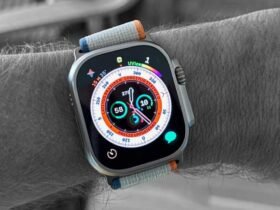Choosing the right phone is never easy, especially when many brands, such as Google and Xiaomi, offer competing models with different strengths in different areas.
The Google Pixel 8a and Xiaomi 14T stand out as two attractive mid-range phones, offering a balance between affordability and premium features.
While both aim to deliver top-level performance at a reduced price, their strengths meet slightly different user needs. Here’s how they compare.
Design and build quality
The Pixel 8a retains the familiar Google phone aesthetic, with its iconic camera bar.
This design feels surprisingly premium for a phone with a plastic back. The compact size, lower weight of 188 grams and IP67 certification make it durable and practical.
However, the thick bezel around the screen detracts from the otherwise modern look, giving it a slightly dated appearance.
Chris Martin / Foundry
The Xiaomi 14T, on the other hand, has a more refined design, with a frosted glass back and an aluminum effect plastic frame. Weighing 195 grams, it is larger, but remains slim and comfortable to use.
Its symmetrical, slim bezels and IP68 rating increase its premium appeal, making it more stylish and better suited to users looking for durability in harsher environments.

Lucas Baker
The Xiaomi 14T surpasses the Pixel 8a here with its slimmer build and higher water and dust resistance.
Displays
The Pixel 8a has a 6.1-inch OLED screen with a refresh rate of 120 Hz and a peak brightness of 2000 nits.
While the screen delivers vibrant colors, excellent contrast and high brightness, the thick bezel undermines the immersive viewing experience.
The stereo speakers produce decent audio quality, rounding out the solid multimedia offering for a mid-range phone.

Chris Martin / Foundry
On the other hand, the Xiaomi 14T features a larger 6.67-inch AMOLED display with a 144Hz refresh rate and an impressive peak brightness of 4000 nits.
This makes it ideal for HDR content and gaming, offering smoother images and better outdoor visibility.
The phone’s stereo speakers also provide good clarity, although the bass lacks depth compared to more expensive models.

Lucas Baker
With a bigger, faster and brighter screen, Xiaomi 14T offers a better visual experience.
Cameras
The Pixel 8a’s 64 MP main camera, combined with a 13 MP ultrawide and 13 MP selfie shooter, excels in a variety of lighting conditions.
Features like Night Sight and Magic Eraser provide powerful tools for creative photography, and the phone’s software delivers consistently excellent results, especially in low light.
The lack of a pro mode may disappoint some users, but the Pixel 8a is undeniably one of the best point-and-shoot options in its class.

Chris Martin / Foundry
Meanwhile, the Xiaomi 14T offers a versatile triple camera setup, including a 50Mp main lens, a 50Mp 2x telephoto and a 12Mp ultrawide. The Leica partnership brings creative filters and color profiles that enhance the photographic experience.
While daylight shots are vibrant and detailed, the ultrawide camera lacks the sharpness of the main lens and low-light performance lags behind the Pixel 8a’s capabilities.
For video enthusiasts, the Xiaomi 14T impresses with its manual controls and support for LOG format recording, adding a professional edge.

Lucas Baker
Still, the Pixel 8a’s superior low-light performance and software-driven photography make it the better camera phone overall.
Other differences
When it comes to performance, the Xiaomi 14T’s MediaTek Dimensity 8300 Ultra outshines the Pixel 8a’s Tensor G3 in terms of gaming and heavy multitasking, but both phones can handle everyday tasks smoothly.
The Xiaomi 14T also has a significant lead in charging, with its 67W fast charging outperforming the Pixel 8a’s 18W wired charging and 7.5W wireless charging.
However, the addition of wireless charging on the Pixel 8a is a feature that the Xiaomi 14T lacks.

Chris Martin / Foundry
In terms of software, Google’s clean Android 15 experience on the Pixel 8a feels more polished and free than Xiaomi’s HyperOS 2, which, while highly customizable, comes pre-loaded with unnecessary apps.
Price
The Google Pixel 8a starts at £499/$499 for the 128GB model, while the 256GB option is available for £559.
You can buy it from Google’s official store, as well as from Amazon. Check out the best Pixel 8a deals to make sure you get it for the lowest possible price.
However, the price increase over previous A-series models puts it closer to the flagship Pixel 8, making it a tough sell for some.
Meanwhile, the Xiaomi 14T starts at £549 for the 256GB model, offering more storage and better hardware at a slightly higher price.
You can buy the phone directly from Xiaomi or through a third-party seller like Amazon.
For those willing to invest a little more, the Xiaomi 14T offers top-level features at an attractive price.
Pronunciation
The Google Pixel 8a is the ideal choice for users who prioritize software experience, superior camera performance and the convenience of wireless charging.
It offers a clean, intuitive Android interface, backed by Google’s industry-leading software support, and its AI-powered photography tools make it a standout in its price range.
However, the Xiaomi 14T excels in areas such as design, display and charging speed, making it better suited to users who value hardware-centric benefits.
While both phones offer great value for money, the decision ultimately comes down to whether you prioritize software and photography (Pixel 8a) or hardware and performance (Xiaomi 14T).











Leave a Reply